

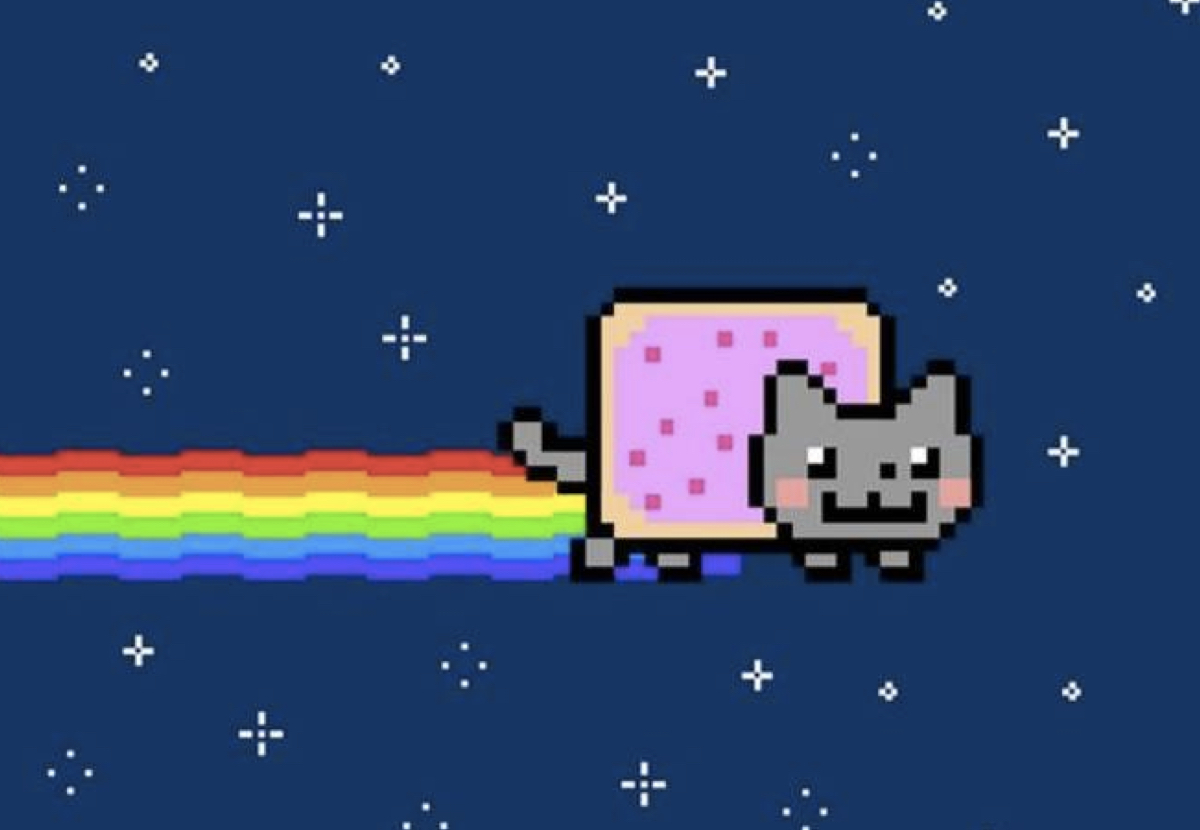
NFTs make a significant case for tokenization of assets using smart contracts, as it will enable fluid value transfer in different spaces globally. A lot of NFT projects are currently tough to assess as the current excitement around this space has been fueled by the rally of cryptocurrencies and hype built around the overall space. As the space continues to grow, we will only be able to see if it succeeds once it moves past its early adopters.
Over the past few months, there have been regular headlines in the news of either a ridiculously high-priced sale of an NFT or a launch of a new NFT project or platform. We even witnessed a piece of digital art auctioned as an NFT for $69.3MM, which was unprecedented in the Art world. Similarly, in other categories we saw the craziest things being sold as an NFT such as the first ever tweet on twitter, characters with funny faces (collectibles), dramatic moments from basketball games and even randomly generated GIFs. It is possible that anything can be minted into an NFT and be listed on a marketplace to sell.


Jack Dorsey's first tweet sold as an NFT for $2.9 MM Cryptopunk #7804 sold for $7.5 MM
What are Non-Fungible tokens (NFTs)?
As the name suggests, Non-Fungible Tokens are unique and cannot be replaced by something else. An example, a $100 dollar bill is fungible as one can trade it for another bill, and you’ll have the same thing. Conversely, NFTs are unique digital assets that live on a blockchain capable of representing artworks, videos, photos and pretty much anything else in the digital or physical realm. They are essentially a unit of data that is hashed on a blockchain that everyone can look at and verify ownership.
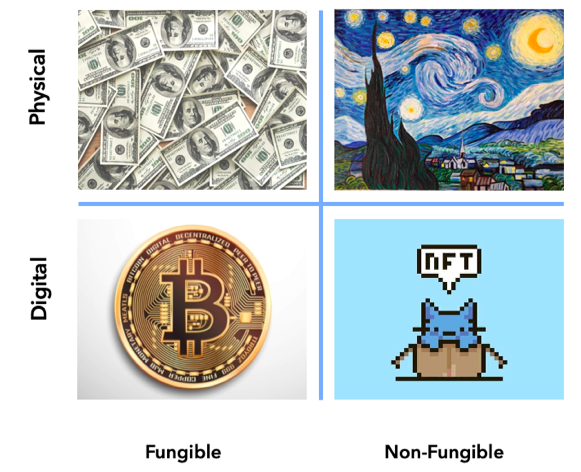
The Underlying Technology
Before we dive deeper into NFTs, it is important to understand the underlying technology - blockchain. As the name suggests, blocks are how the data of information is stored and then linked together in a permanent chain. It is a decentralized public network that stores and secures the transfer of information, value, and currency. Every time another block is added to the chain, it makes it harder to change the previous blocks, allowing each block to become more secure. The three most basic parts that every blockchain will have is:
1. The record (any type of information),
2. The block (bunch of records)
3. The chain (contains all the blocks linked)
The key difference between how regular transactions and blockchain transactions work is that the blockchain facilitates peer-to-peer transactions without the reliance on centralized entities. But how can digital media be converted into an NFT if blockchain only facilitates transactions and secures information?
Most NFTs are part of the Ethereum blockchain. The Ethereum blockchain is like any other blockchain that facilitates the transactions of its cryptocurrency, Ether, but also supports the development of applications such as NFTs and DeFi (Decentralized Finance) apps. The NFTs have their own software coded into them, also known as “smart contracts,” that can be customized to provide significant benefits to the NFT creators, which we will delve into later. Smart contracts are essentially open sourced blockchain protocols that directly control the transfer of currencies or assets between two parties under the terms and conditions set by those said parties. It is like a regular contract, although the terms and conditions are coded into the smart contract. Once the code is entered, the user can mint the smart contract into a token on the blockchain such as Ethereum and in this case as an NFT. The code inserted into the smart contract by the creator could add functions such as royalty payments on resales, digital certificate proving ownership and establishing provenance (origin of the NFT). Now that we understand the underlying technology of NFTs, let’s explore why people are willing to pay such obnoxious prices for something that is simply a piece of media being sold as a token.
The characteristics of NFTs and their origins
Since NFTs use smart contracts built on blockchain technology, they are unique and cannot be copied. However, the additional characteristics that make NFTs so attractive to buyers are:
· Immutability and provable scarcity
· Unique
· Interoperable
· Verifiable on the Blockchain
· Absolute ownership
Since NFTs use smart contracts, the developers have the freedom to control the supply of certain assets, making them a lot more desirable and the metadata in the smart contract helps establish uniqueness from the other assets. Also, the open nature of blockchain technology enables NFTs to move across multiple ecosystems, wallets, and marketplaces, which allow users to trade these assets outside of their original platforms.

First Ever NFTs: Colored coins issued on the Bitcoin Blockchain
The origins of NFTs go back to 2012 when colored coins were initially issued on the Bitcoin blockchain that represented as little as a single satoshi, the smallest unit of currency of a Bitcoin. This was the beginning; the colored coins are nowhere near as sophisticated as NFTs today. Since then, we have seen several platforms and projects that propelled NFTs to popularity. It began with Counterparty, a peer-to-peer platform allowing users to create their own currency or digital assets that were used for things such as meme trading. In 2017 we witnessed a range of NFT projects release on the Ethereum blockchain starting with Rare Pepes. They are unique illustrations and photoshops of the character Pepe the Frog that were traded as memes. These illustrations had their own marketplaces “Peperium” that allowed anyone to create and trade memes. Since the trading of Rare Pepes picked up, two creative technologists John Watkinson and Matt Hall created an experimental project called CryptoPunks. They created unique characters on the Ethereum Blockchain with a limit of 10,000 characters that had different backgrounds, accessories, and expressions. Initially, anyone that was aware of this project with an Ethereum wallet could claim these for free and sell them on a secondary marketplace. This project has become extremely popular because over the past four years it has been able to create a community around it. Recently, the most expensive Cryptopunk was sold through an auction at Sotheby’s that reached a price of $11.7MM. The significance behind this Cryptopunk #7523 is that it is one in nine alien CryptoPunks and the only one with a mask.
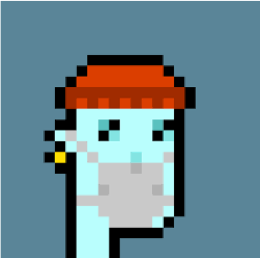
Similarly, a few months later, a project by the name of Cryptokitties was launched. It is a blockchain based game where the participating players can adopt, raise, and trade virtual cats. At the time, these projects became so popular that the Ethereum blockchain slowed down. However, the peak and hype around all these projects only lasted about six months as compared to the explosion of Cryptocurrencies in 2017 that lasted the whole year. Even though we saw the hype of NFTs settle down, there was rapid growth within the ecosystem as there are now over 100 projects within the space and more upcoming. Although there has been an increase in the number of projects, what are the basic functions or what is the utility of NFTs that make it so popular?
Utility vs Status
In video games we can buy the in-game currency using fiat INR or USD to purchase in-game items such as higher-level characters, skins, and weapons. However, a user makes these purchases so that they can play the game at a higher level with enhanced features, but those purchases also imply that the user has a higher status over others in the game. Games such as Fortnite, League of Legends and Roblox show us how many gamers care for the small things such as the accessories on their characters, color of their weapons, and the celebration moves after winning. Hence, in video games these additional items have UTILITY and STATUS but in most NFTs a lot of these collectibles are purchased for enhancing status rather than serving any utility.
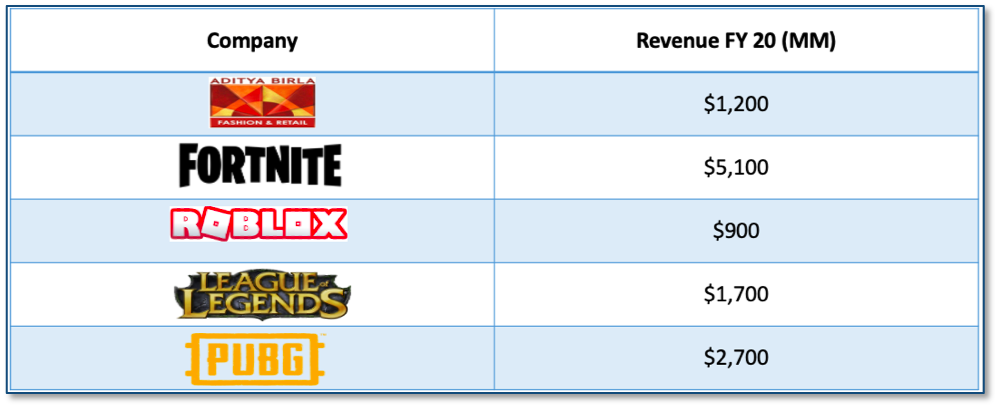
Note: Fortnite does over $250MM/month in revenues by selling virtual clothes. Their revenue is 3x more than what Aditya Birla Fashion’s a company that sells real clothes.
Who’s buying NFTs and where are they buying them from
As we can see, NFTs have become popular because of their various characteristics and uses, but who are the people continuing to purchase these NFTs at such high prices. The common denominator amongst these buyers is that they desire “Ownership over Access”, therefore, not just being able to take a screenshot, viewing it online or taking a video of something but owning that piece of media. These investors are essentially super fans of projects, early crypto investors, sports fans, crypto enthusiasts, and art collectors. Most of the big ticket NFT sales mainly come from the top 10-15 collectors, who were early crypto investors that would rather own the piece of digital media over just having access to it and this has resulted in somewhat inflated prices. The category that has witnessed the highest sales volume are collectibles, although, sports NFTs are witnessing a higher retention rate. The sports fans purchasing the NFTs are holding their assets whereas collectibles are being resold.
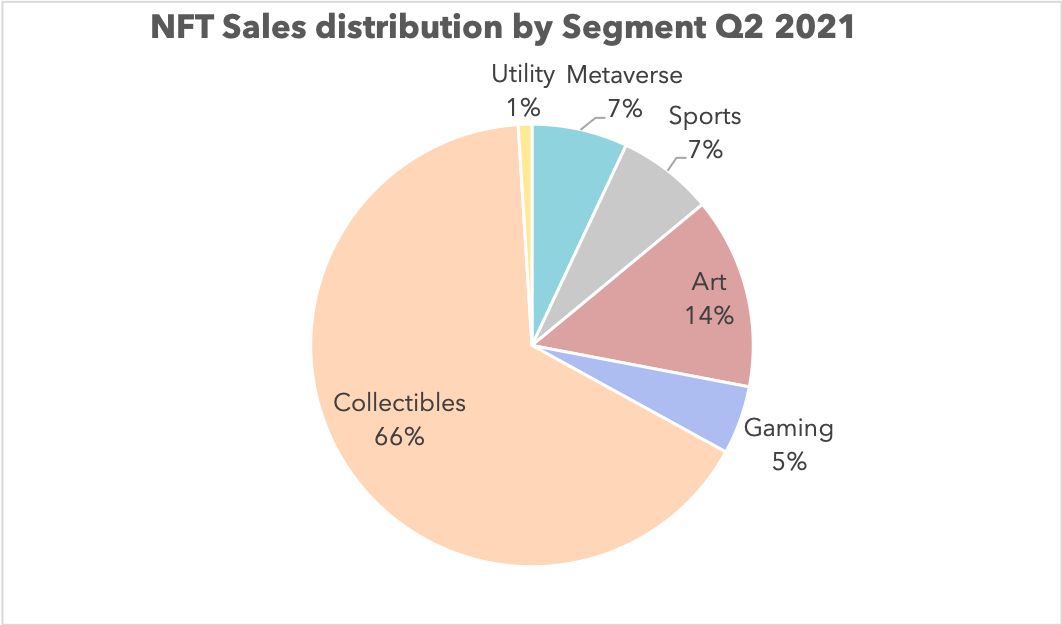
Source: Nonfungible.com report Q2 2021
Today, alongside the various NFT projects, there are several marketplaces that allow users to buy, sell, and re-sell their NFTs. There are two primary types of marketplaces: open marketplaces, and vertical marketplaces.
Open marketplaces allow users to create, buy, sell and re-sell NFTs across all categories such as domain names, art, music, sports, virtual land, collectibles, trading cards and in-game artifacts. Some of the popular open marketplaces include Opensea, Rarible, Nifty Gateway and a few more.
The vertical marketplaces allow the buying and selling of category specific NFTs include Sorare and NBA Top Shot (Sports), SuperRare and Foundation (Art) and Cryptokitties and F1 delta time (Games). Users may choose to use either type of marketplace open or vertical, however, the NFT projects that have sold out at launch will more likely be found on open marketplaces to re-sell as it gives the buyer a wider audience.
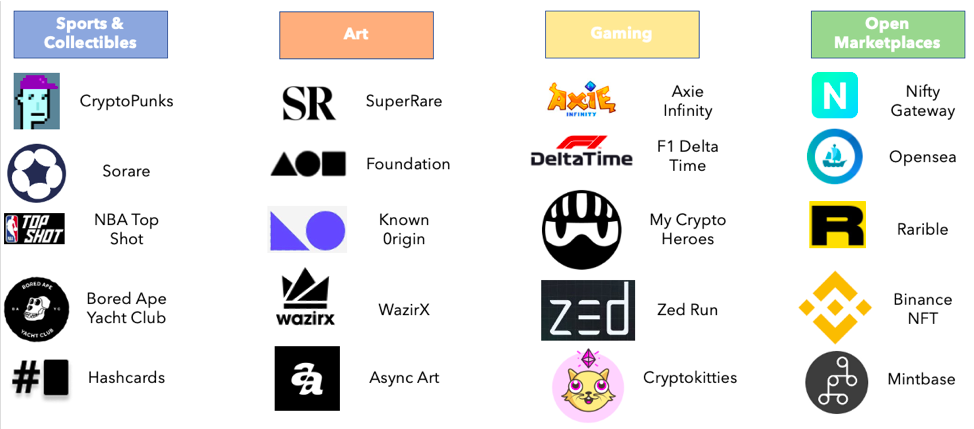
Popular NFT categories in 2021
As we saw the sales of popular NFT categories increase alongside it, we witnessed a rise in new projects and artists within those categories
1. Collectibles
In the collectibles space a new project called “Bored Ape Yacht Club (BAYC)” was launched by Yuga Labs, which is a collection of 10,000 Bored Ape NFTs that are all unique. They are similar to CryptoPunks where each ape has unique characteristics such as facial expressions, accessories, backgrounds and props. The difference was when the BAYC project launched, the cost of each Ape was 0.080ETH ($230) whereas CryptoPunks were free. The entire BAYC collection sold out within minutes and the secondary marketplace’s saw re-listings on that very day. A lot of buyers are holding onto their Ape’s as everyone that owns one of the Ape illustrations is part of a larger community. This community gives members access to certain privileges such as club membership card and a collaborative graffiti board for the community to connect with each other. Furthermore, the same team has launched a project called “Bored Ape Kennel Club (BAKC)”. There will be 10,000 unique NFT dogs to accompany the 10,000 unique bored apes. The addition of this project will add value for the BAYC owners as it will allow them to build and trade a collection amongst the community and even resell them.
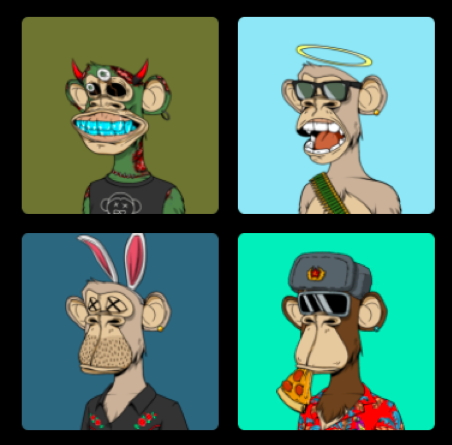
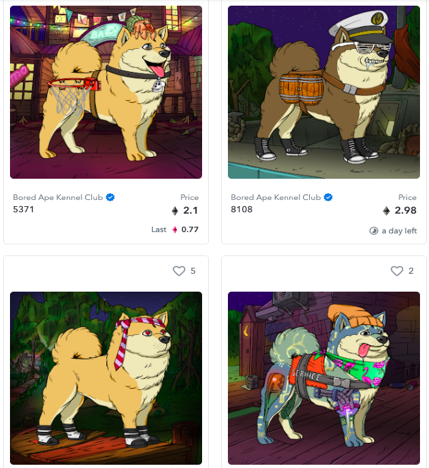
Source: BAYC Source: BAKC
2. Sports
One of the most successful consumer blockchain products is a sports NFT platform called NBA Topshot. The platform has officially partnered with the NBA league to allow fans to buy, sell and trade numbered version of specific video highlights (moments). These highlights range across six categories, common, rare, legendary, platinum ultimate, and genesis ultimate. The moments range in designated rarity and scarcity, which gives them their value. The most expensive Top Shot moment that was sold for $208,000 was a moment of LeBron James dunking, however, this video can be seen on YouTube, but the sports NFT world is driven by superfans that want to own the moment rather than just have access to viewing it. The platform saw its highest volumes at the end of February 2021 when it reached $46MM and at that time there were only around 46,000 active users. However, currently the number of active users has rapidly increased as opposed to the number of transactions that have significantly reduced. This indicates that a lot more NBA fans are participating on the platform but are trading the lower category top shot moments.
NBA Top Shot Platform Activity
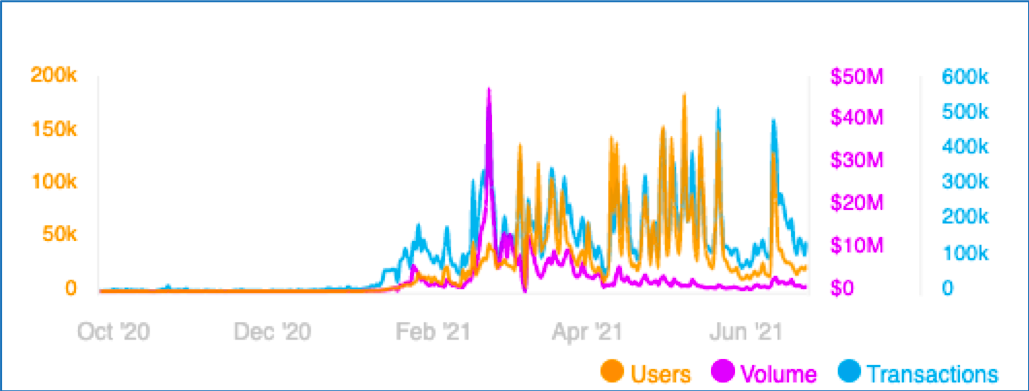
Source: DappRadar.com
3. Digital Art
There has been a wave of emerging digital artists as NFT sales have peaked starting late 2020. We saw the most expensive NFT, a digital artwork sell for $69.3MM by Beeple. There has been a lot of speculation as to why someone would pay such a high price for a digital artwork that can be saved as a picture. The answer to this lies in how we have valued traditional art as a society. We value traditional artists and their art, we value the certain story behind the art amongst other factors such as its rarity, complexity, and technique used to create the art. Similarly, the artwork by Beeple (Mike Winkelmann) Everyday: THE FIRST 5000 DAYS, is a compilation of his works that show how he has evolved as an artist over 13 years, which itself tells a story about the digital artwork created.
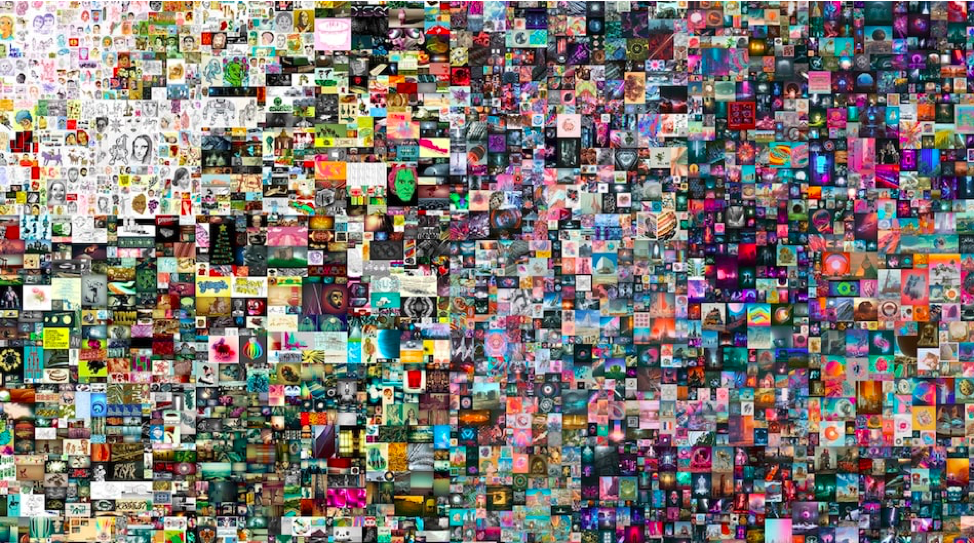
Everyday: The First 5000 Days by Beeple (Mike Winkelmann)
After purchasing an NFT, a buyer would like to display it such as he would display traditional art on the wall of a house, office, or gallery. However, putting an NFT display around your home or in a gallery requires more of an effort than hanging physical artworks. Digital photo and video frames have significantly evolved over the last decade and crypto art collectors are looking at these devices to bring NFTs to life on their walls. The companies that are building for this market are Infinite Objects, TokenCast and Qonos. These companies are focusing on building digital frames to display the different categories in NFTs such as sports, art, 3D, etc and allow for displaying the different formats within these categories such as photos, videos, and GIFs. An additional optional feature that these companies are offering while displaying the NFTs is adding a QR code that will direct viewers to a proof of ownership page. Furthermore, while purchasing the frame, these companies give buyers the option to upload their NFT to the digital frame prior to shipping, which makes it easy to put up once received. These digital display companies are addressing a market that is very nascent as currently there is a lot of hype around NFTs and is yet to be seen if it is able to move past its early adopters.
NFTs are still at a very early stage
There have been several NFT projects, marketplaces and games that have launched over the past few years that have experienced a lot of excitement. The NFT market grew at 187% CAGR since 2018, but it is still very early as the excitement around this space is inflated.
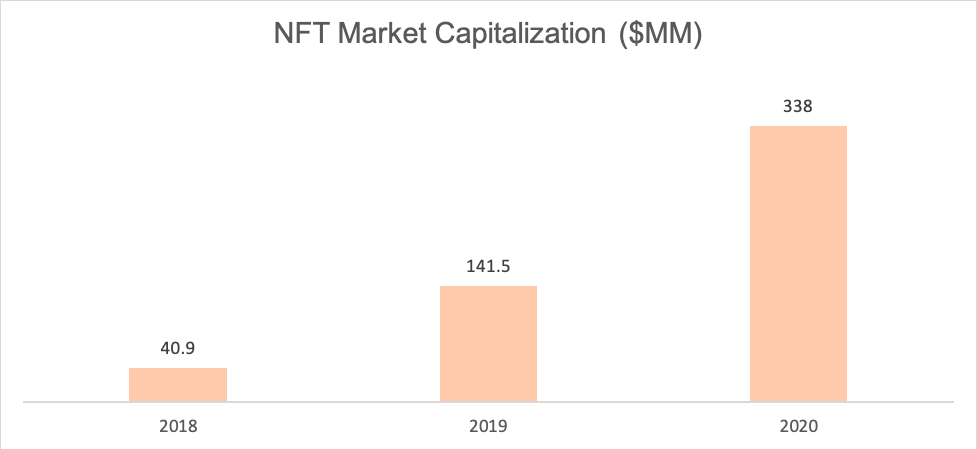
Source: Nonfungible.com report 2020
Although, the rally of cryptocurrencies in the first half of 2021 has really helped boost the sales of NFTs. The first half of 2021 witnessed a little under $2.5Bn worth of NFT sales across multiple blockchains including Ethereum, Flow, Wax and Binance Smart Chain (BSC). This rapid increase in NFT sales is a result of two types of buyers, first a lot of NFT enthusiasts view them as collectibles with intrinsic value because of the active community around them and the cultural significance. The other type of buyers treat them as an investment by speculating on the rising prices and popularity.
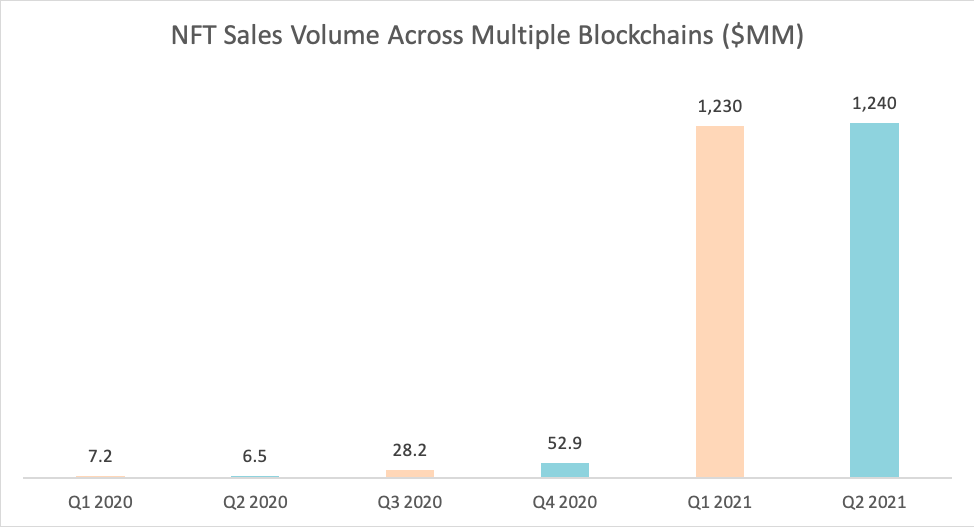
Source: DappRadar and Reuters
The “Drop” culture and Hype around NFTs
Although these new artists and projects have seen record sales, they have been able to create a lot of hype before the release of their projects either through social media or creating a fan following over the past few years. A lot of the hype that is being created is using the “Drop Culture”, like what streetwear brands are doing. Streetwear brands such as Supreme create massive hype before releasing their clothing lines by sharing it on social media multiple times before the launch, disclosing the limited amounts of each apparel category and even using celebrities to promote the brand. Similarly, with NFTs, we are seeing creators and artists use the “drop” culture to hype their products before launching them, including disclosing the number of NFTs that will be available for each drop. However, as far as NFTs are concerned, they are extremely over-hyped at the moment. Most of the drops have inflated price tags and will eventually see a correction.
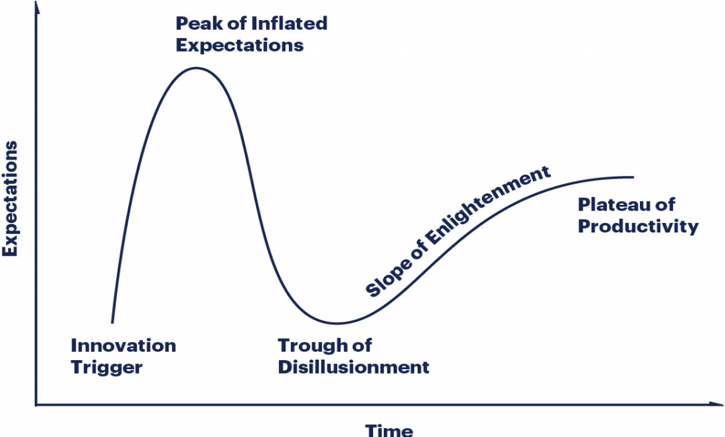
The Gartner Hype Cycle is a great representation of how overly inflated NFTs currently are
The majority of NFT consumers buying into different projects are extremely new to the concept and find it really fascinating. Hence, there will be a cluster of projects whose value will significantly reduce once the bubble bursts. However, we will see projects that provide utility, sports collectibles and certain digital artist that will remain prominent in this space.
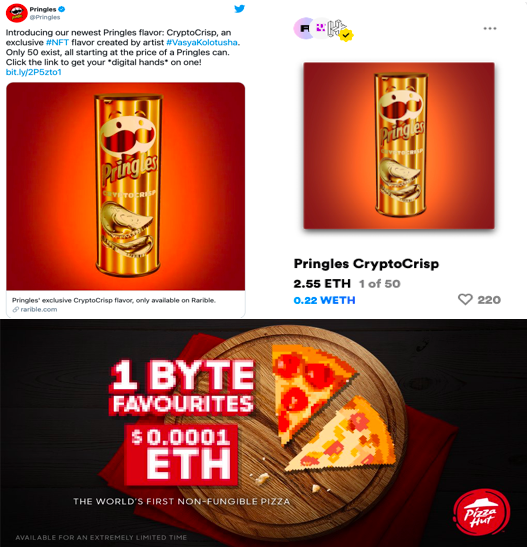
The hype around NFTs is so crazy that currently we are even seeing consumer brands launch their own NFTs just to market to the crypto audience. Pringles released 50 limited editions of the Crypto crisps flavors as an NFT at a price of 0.0013ETH ($2) which is an average price of an actual pringles can. However, having said this, consumer brands could use NFTs to interact with the audience through loyalty programs and even discount offerings. Although there is a lot of hype around NFTs, there are certain benefits which if applied meaningfully could provide significant value to stakeholders. The creator economy is one such example.
Creator Economy
There are two platforms, Audius and Mirror, that have emerged through the NFT space that are allowing artists and writers to connect directly with their audience.
Audius is a streaming platform built on blockchain technology that allows artists to upload their album and get paid directly by the listeners using the platform token. This platform allows listeners and superfans of artists to own the song rather than listening to it through a streaming platform. Another added benefit is 90% of the platform’s revenue goes directly to the artists who are paid according to the streams they have accumulated. Similarly, a platform by the name of Mirror is allowing writers to publish their works on the platform and sell these works directly to their readers. Readers and publishers can directly pay writers an advance or contract them through Mirror, which allows the revenue sharing to increase for the writer as it removes the intermediary (publishing companies).
Buying decentralized products on centralized platforms
Purchasing an NFT is as easy as ordering from Amazon, though it is interesting that users purchase decentralized products on centralized platforms/exchanges. Centralized platforms witness majority of the transactions of decentralized assets because the UI/UX is much easier and convenient for the average user to navigate through, the lack of trust for decentralized exchanges and the infrastructure is a lot more developed to facilitate advanced trading options. Majority of the NFT platforms are centralized as they rely on a private infrastructure to manage the transactions internally through their own servers. However, there are decentralized exchanges (DEXs) that are building platforms to support these products and transactions as well as make it easier for the user to access.
As we are still witnessing decentralized assets such as NFTs being traded on centralized exchanges, NFTs will not disrupt centralized exchanges in any way. Although almost anything can be turned into an NFT, we don’t see the NFTs disrupting centralized exchanges such as travel portals, audio streaming platforms and ticketing platforms as they aren’t meaningfully solving any problem. The exchange that NFTs are traded on still controls the sales and distributions, hence, the only differentiation from a platform such as Opensea and MakeMyTrip is underlying technology of the products they distribute is built on top of a blockchain.
The excitement around NFTs has had such a strong pull towards them as we are even seeing established art galleries and auction houses such as Christie’s and Sotheby’s enter the space. Recently, Sotheby’s listed and sold a Cryptopunk for $11.7MM, accepting payment in cryptocurrency. Similarly, Christie’s platform auctioned Beeple’s artwork, The First 5000 Days for $69.5MM in early March. These auction houses that over 200 years old are expanding their offerings to list and auction decentralized assets such as NFTs to capture the increased interest in the space.
NFTs in India
Over the past year in India the Cryptocurrency market has seen a surge like never before due to the lifting restrictions in 2020 for crypto trading. Platforms have witnessed record userbase growth and high trading volumes alongside an increase in funding for some of the exchanges. Despite the hostility towards the asset in India, investments in crypto grew from $200MM to almost $40Bn over the past year with more than 15MM people buying and selling digital assets. There is a shift from investing in gold to digital coins coming from the 18-35 year old cohort as Indian adults in this cohort are more willing to take on risk than older consumers. With the rise in interest of cryptocurrencies in India, NFTs have seen some exciting new projects and the launch of the WazirX marketplace.
A sports NFT project known as Hashcards was “dropped” in April 2021. They are a collection of 2100 cricket cards, in addition to being a collectible they can be used in the cricket clashes game. Furthermore, the WazirX NFT marketplace was recently launched that focuses on Indian digital artists and photographers. Prior to the launch of the marketplace, WazirX collaborated with Indian artists to “drop” their artworks as NFTs on the marketplace. While most NFT platforms and marketplaces use the Ethereum blockchain to create NFTs and transact on the platform, WazirX NFT marketplaces are powered by Binance Smart Chain. Minting an NFT on a platform powered by the Ethereum blockchain would cost you between $70 and $120, though, during peak times the costs have reached upwards of $200 and $300. However, the WazirX marketplace does not require any listing price except for the gas fees charged by the Binance Smart Chain which brings the cost down to around $1.
In India the idea of cryptocurrencies is still relatively new and will take some time for it to gain widespread users, hence, since NFTs are a product of cryptocurrencies, it will take some time for people to get involved with NFTs.
Conclusion
In conclusion, the Cryptocurrency and NFT space is extremely nascent as we have yet to see widespread adoption. However, NFTs make a significant case for tokenization of assets using smart contracts, as it will enable fluid value transfer in different spaces globally. Currently, we are witnessing a lot of hype around NFTs and once it subsides the projects that have the following characteristics will sustain long term:
· Utility NFTs
· Sports NFTs with their superfan base
· Collectible NFTs that have built a community around them
· Platforms that allow creators to develop and monetize their work and directly connect with consumers
A lot of NFT projects are currently tough to assess as the current excitement around this space has been fueled by the rally of cryptocurrencies and hype built around the overall space. As the space continues to grow, we will only be able to see if it succeeds once it moves past its early adopters.